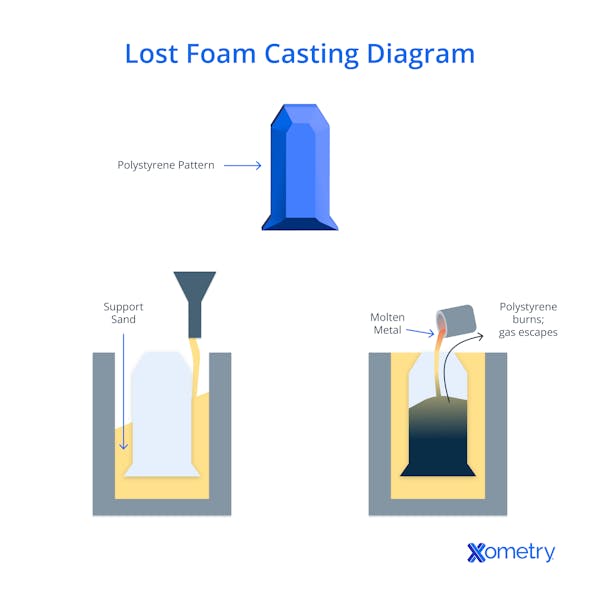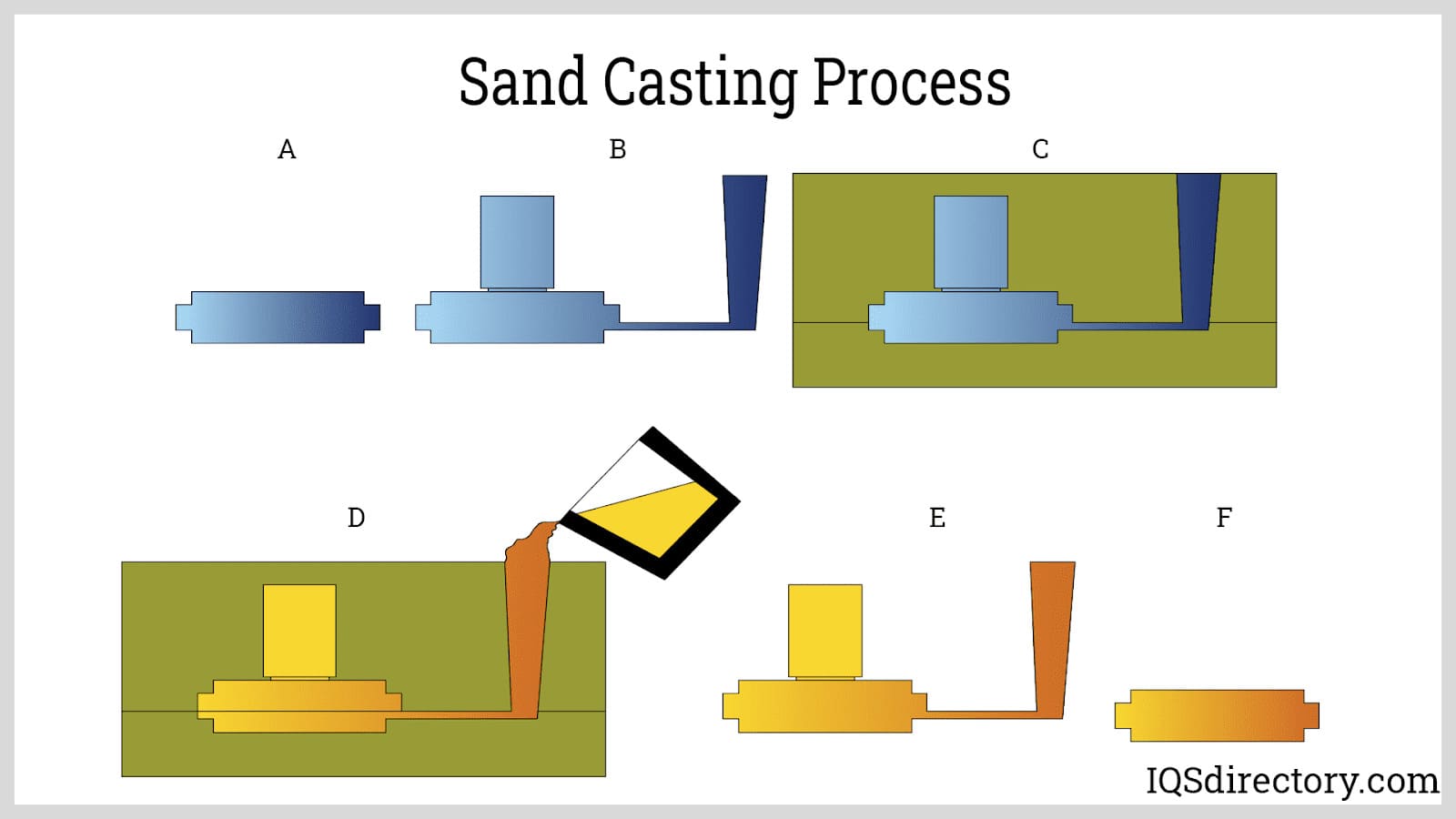The importance of Aluminum Foundry Wisconsin in casting projects
Exactly How Aluminum Foundry Adds To Developments in Aerospace Design
Aluminum shops are integral to innovations in aerospace design. They generate lightweight, high-strength elements that are essential for modern airplane. Via innovative spreading methods, these shops produce intricate geometries that enhance architectural honesty. Additionally, the development of premium Aluminum alloys supports the industry's focus on gas performance and sustainability. However, obstacles remain in the manufacturing process. Understanding these variables exposes the profound effect of Aluminum on aeronautics's future.
The Significance of Lightweight Materials in Aerospace Design
As the aerospace sector remains to advance, the significance of lightweight materials becomes increasingly obvious. The demand for effectiveness and sustainability drives engineers to focus on the usage of products that decrease overall weight without endangering architectural integrity. Light-weight products, particularly Aluminum, play an essential function in boosting fuel performance, enhancing haul capability, and boosting the total efficiency of aircraft.
The assimilation of these materials enables for innovative designs, allowing manufacturers to create more wind resistant forms that can stand up to severe conditions. The reduction in weight not just lowers operational costs but likewise adds to a reduced ecological impact, straightening with global initiatives towards sustainability in aviation.
Advanced Casting Techniques in Aluminum Foundries
Advanced casting strategies in Aluminum factories play a critical role in aerospace design by allowing the production of precise and lightweight parts. Advancements in mold style and precision casting processes are essential in attaining ideal performance and structural integrity. In addition, the advancement of lightweight alloys boosts the general performance and performance of aerospace applications.
Cutting-edge Mold And Mildew Style
Cutting-edge mold and mildew layout plays a necessary duty in the performance and performance of Aluminum foundries, specifically within the aerospace industry. By leveraging innovative materials and methods, contemporary molds can be engineered to endure high temperatures and stress, making certain peak efficiency during the spreading procedure. These layouts typically incorporate intricate geometries that enable the production of light-weight yet structurally sound components, important for aerospace applications. Furthermore, using computer-aided design (CAD) software assists in accurate modeling, making it possible for factories to refine and simulate mold styles before physical manufacturing begins. This not just boosts the quality of actors parts however additionally reduces waste and preparation, resulting in substantial cost savings. Overall, ingenious mold and mildew layout is a foundation of progression in Aluminum Foundry innovation for aerospace engineering.
Accuracy Casting Procedures
The efficiency of ingenious mold layouts effortlessly integrates with accuracy casting procedures, which are necessary for producing high-grade Aluminum components in aerospace design. These processes, including sand casting, die casting, and investment spreading, ensure the production of complex geometries with limited tolerances. Advanced methods like vacuum spreading and pressure die casting boost the honesty and surface coating of the last products. Accuracy casting minimizes product waste while making best use of the mechanical buildings of Aluminum, critical for aerospace applications. Furthermore, employing real-time tracking and progressed simulation devices during the spreading procedure permits prompt adjustments, causing improved top quality control. Jointly, these precision casting processes setting Aluminum factories at the leading edge of aerospace technology, supporting the industry's demand for dependability and efficiency.
Light-weight Alloy Growth
As aerospace engineers look for to improve gas performance and efficiency, lightweight alloy advancement comes to be a vital emphasis in Aluminum shops. These shops employ advanced casting strategies to create alloys that give superior strength-to-weight ratios. Advancements in alloy composition, consisting of the consolidation of aspects like lithium and magnesium, make it possible for the production of products that stand up to extreme problems while minimizing total aircraft weight. Techniques such as die casting and investment casting help with the precision manufacturing of complex shapes, which are vital for aerospace applications. Additionally, ongoing study aims to optimize these alloys for boosted mechanical residential properties and raised resilience. By focusing on light-weight alloy development, Aluminum factories substantially add to the evolution of aerospace design, paving the means for much more effective and lasting aircraft layouts.

Enhancing Architectural Honesty With Aluminum Elements
Aluminum components use substantial advantages in boosting architectural honesty within aerospace design. Their light-weight nature adds to overall performance while preserving strength, which is essential for aircraft efficiency. Furthermore, the tension resistance residential or commercial properties of Aluminum aid assure the sturdiness and dependability of aerospace structures under various functional problems.
Lightweight Material Conveniences
While typical products typically compromise weight for toughness, making use of Aluminum parts in aerospace design offers substantial advantages in architectural stability. Aluminum's light-weight nature adds to total layout efficiency, enabling more structured airplane that eat much less fuel, thus enhancing sustainability. The product's excellent strength-to-weight proportion warranties that components keep durability without adding unnecessary mass. This top quality fosters boosted efficiency and dexterity in flight, in addition to optimized haul abilities. Furthermore, Aluminum's resistance to rust lengthens the life expectancy of aerospace frameworks, lowering upkeep prices and enhancing safety. As producers significantly take on Aluminum alloys, the aerospace sector experiences a transformative shift in the direction of extra effective and efficient engineering solutions that focus on both performance and environmental responsibility.
Anxiety Resistance Qualities
Different products have distinct residential or commercial properties, Aluminum's remarkable anxiety resistance stands out as a crucial factor in enhancing the structural integrity of aerospace elements. This resistance plays an important function in making sure that aircraft can stand up to numerous operational anxieties, consisting of fatigue, impact, and environmental conditions. Aluminum alloys, specifically engineered for aerospace applications, exhibit high tensile strength while preserving click for source light-weight attributes, making it possible for designers to design much more efficient structures - Aluminum Foundry. Furthermore, the ability of Aluminum to sustain cyclic loading without substantial deformation adds to the longevity and dependability of aerospace elements. As developments proceed in Aluminum Foundry techniques, the growth of stress-resistant Aluminum elements assures further improvements in efficiency, security, and efficiency across the aerospace market, solidifying Aluminum's duty as a preferred material in modern design
Gas Performance Improvements Driven by Aluminum Innovations
As the aerospace sector looks for to improve gas effectiveness, cutting-edge usages of Aluminum have emerged as an essential service. Aluminum's light-weight nature especially decreases aircraft weight, permitting lower fuel intake during trip. This decrease in weight is important, as also small decreases can bring about significant renovations in general fuel economy.
Advanced Aluminum alloys, developed for enhanced toughness and durability, make it possible for suppliers to create elements that preserve structural integrity while reducing mass - Aluminum Foundry. Furthermore, the combination of Aluminum in airframes and engine parts promotes boosted the rules of aerodynamics, adding to decreased drag and boosted efficiency
The adoption of Aluminum in aerospace not just meets the need for fuel-efficient design but additionally aligns with regulative pressures for lower exhausts. As these advancements remain to develop, they play a significant function in setting new standards for fuel performance, making sure that the aerospace market can fulfill growing economic and environmental difficulties.

The Duty of Aluminum in Sustainable Aviation Practices
The enhancing focus on sustainable air travel methods has positioned Aluminum as a crucial material in the mission for greener aircraft style. Known for its lightweight residential or commercial properties, Aluminum considerably lowers airplane weight, causing lower fuel intake and exhausts. Its recyclability further boosts its sustainability account, as Aluminum can be recycled indefinitely without loss of quality. This characteristic sustains a circular economic climate within the aeronautics field, lessening waste and source depletion.
Innovations in Aluminum alloys have actually enhanced their toughness and corrosion resistance, enabling for longer solution life and minimized maintenance requirements. These innovations assist in the advancement of much more efficient airplane frameworks, adding to general sustainability initiatives. In addition, Aluminum's thermal conductivity plays a critical role in energy-efficient layouts, boosting systems such as warm exchangers. Jointly, these features emphasize Aluminum's pivotal function in progressing sustainable aeronautics, lining up with worldwide initiatives focused on lowering the ecological effect of flight.
Difficulties Encountered by Aluminum Foundries in Aerospace Production
While Aluminum factories play an important role in aerospace manufacturing, they deal with substantial obstacles that can affect manufacturing effectiveness and high quality. One significant challenge is the stringent high quality control requirements required in the aerospace sector. Any kind of issue can compromise safety and efficiency, requiring rigorous examination processes that prolong production timelines. Furthermore, shops frequently compete with changing resources prices, which can impact prices and earnings. The intricacy of Aluminum alloys utilized in aerospace applications more makes complex the production process, as accurate solutions are important for achieving wanted mechanical homes. Moreover, skilled labor scarcities impede the ability to maintain high-grade production degrees. Ultimately, ecological regulations enforce limitations on discharges and waste administration, requiring shops to buy lasting techniques, which can be cost-prohibitive. These aspects collectively create a landscape where Aluminum foundries must continually adapt to fulfill the advancing needs of aerospace manufacturing while making certain safety and security and compliance.
Future Fads in Aluminum Applications for Aerospace Design
With developments in technology and enhancing needs for efficiency, the future of Aluminum applications in aerospace design is positioned for substantial transformation. The assimilation of cutting-edge Aluminum alloys and composites is anticipated to enhance strength-to-weight proportions, leading to even more fuel-efficient aircraft styles. Furthermore, improvements go to this website in additive manufacturing strategies will certainly enable the manufacturing of complicated Aluminum structures that were formerly impossible, maximizing performance and decreasing waste.

Lasting methods will play an important duty, with a growing focus on recycling Aluminum to minimize environmental influence. The aerospace sector is likely to embrace smarter manufacturing procedures, such as automation and man-made intelligence, guaranteeing better and precision in Aluminum components. Cooperations in between Aluminum foundries and aerospace companies will certainly promote visit site research and development, paving the method for new applications that meet the stringent requirements of modern-day aerospace design. Overall, the future looks promising for Aluminum's function fit the skies
Regularly Asked Questions
What Are the Environmental Impacts of Aluminum Manufacturing in Aerospace?
The environmental impacts of Aluminum manufacturing in aerospace consist of significant energy intake, greenhouse gas emissions, and environment disruption. In addition, mining procedures can bring about dirt destruction and water contamination, raising issues regarding sustainability and environmental balance.
How Does Aluminum Contrast to Various Other Materials in Aerospace Applications?
Aluminum uses an unique combination of light-weight buildings, rust resistance, and cost-effectiveness contrasted to various other materials. Its high strength-to-weight ratio makes it especially useful for aerospace applications, enhancing fuel effectiveness and total efficiency in airplane layout.
What Credentials Do Aluminum Foundry Employees Need for Aerospace Projects?
Aluminum Foundry workers require specific training in metallurgy and spreading strategies, in addition to knowledge of aerospace market standards. Certifications in quality assurance and safety procedures are also necessary to assure conformity with stringent aerospace task needs.
Exist Any Safety Interest In Making Use Of Aluminum in Aerospace Design?
Security issues regarding Aluminum in aerospace design consist of susceptibility to tension, corrosion, and fatigue cracks. Appropriate therapy and alloy option are necessary to mitigate these dangers, making sure structural honesty and general safety and security in aerospace applications.
Just How Does Aluminum Recycling Advantage the Aerospace Sector?
Aluminum reusing significantly profits the aerospace sector by reducing product costs, minimizing environmental influence, and preserving power. This sustainable method boosts the sector's performance while advertising using lightweight, high-performance components in aircraft manufacturing.
Advanced casting methods in Aluminum foundries play a vital duty in aerospace engineering by allowing the manufacturing of accurate and light-weight elements. Cutting-edge mold and mildew style plays a crucial duty in the effectiveness and efficiency of Aluminum factories, specifically within the aerospace industry. As aerospace designers seek to boost fuel performance and efficiency, light-weight alloy development comes to be a crucial emphasis in Aluminum shops. Aluminum alloys, specifically crafted for aerospace applications, display high tensile toughness while keeping lightweight characteristics, allowing designers to create a lot more effective structures. Collaborations in between Aluminum shops and aerospace business will foster research study and development, paving the means for brand-new applications that fulfill the rigid requirements of modern aerospace engineering.